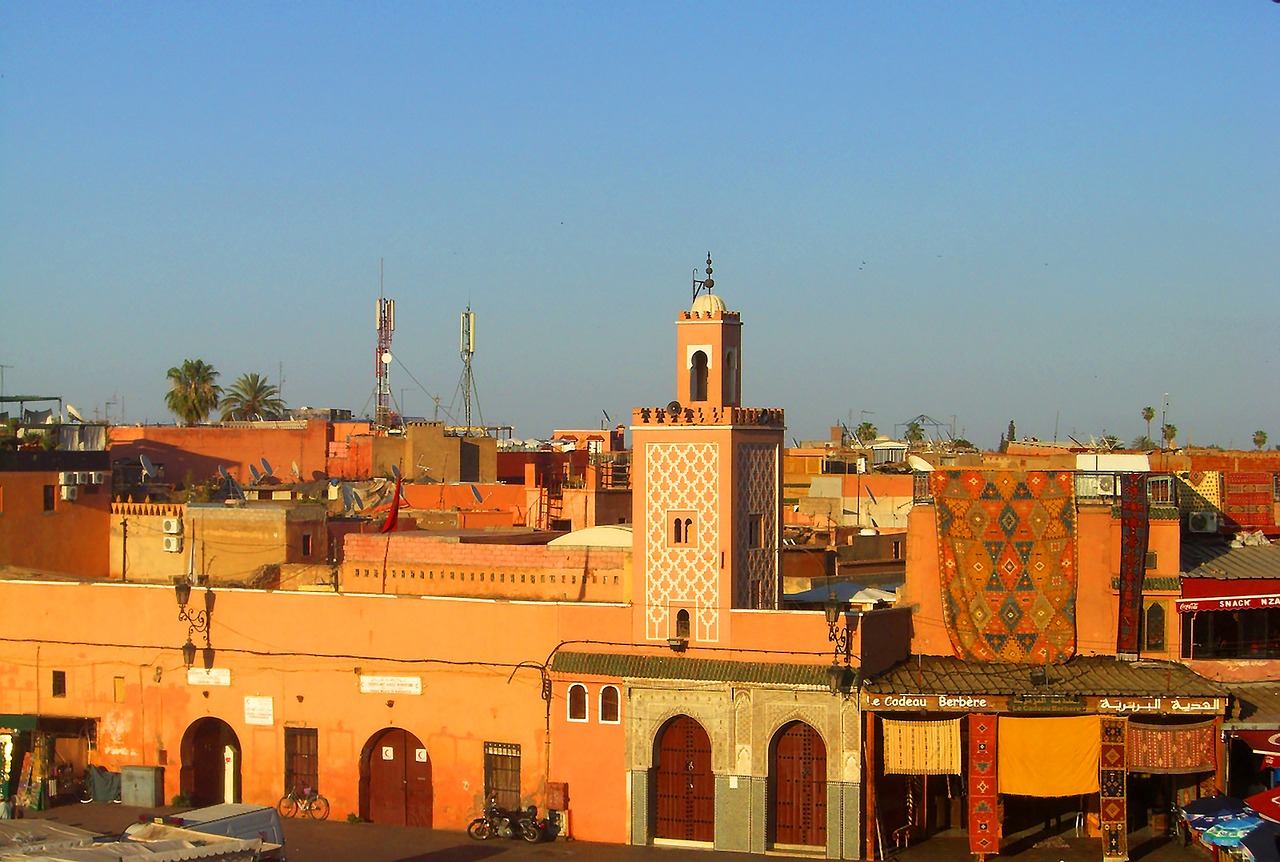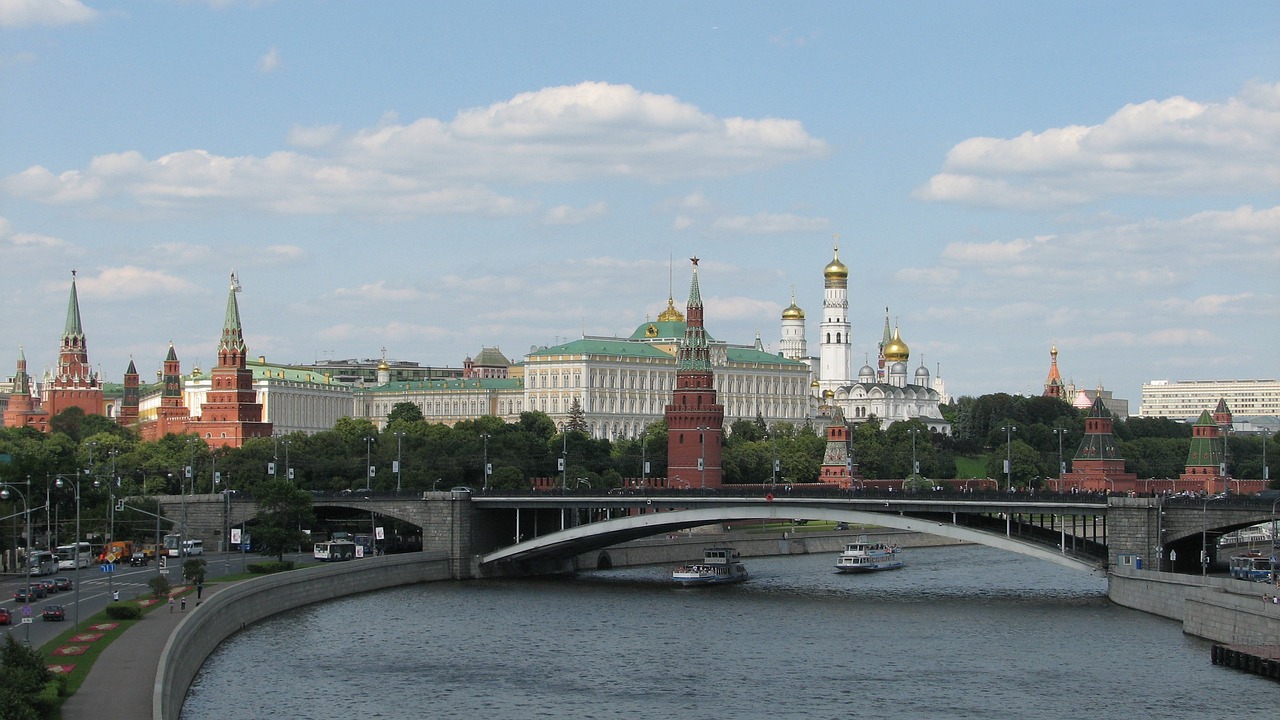Nestled at the foot of the snow-capped Atlas Mountains, Marrakech, an ancient city in Morocco, beckons travelers with its colorful tapestry of culture, history, and sensory experiences. Known as the “Red City” due to its famous red sandstone walls, Marrakech is a place where tradition meets modernity, creating a vibrant and dynamic atmosphere that captivates visitors from all corners of the world.
The Allure of Marrakech’s Medinas and Souks
One cannot speak of Marrakech without mentioning its bustling medinas and souks. The Medina of Marrakech, a UNESCO World Heritage Site, is a labyrinthine of narrow streets and alleyways, alive with the sounds, smells, and sights of Moroccan life. This ancient city center is encircled by towering walls and is home to countless shops, market stalls, and craftsmen. Here, one can find everything from handwoven Berber carpets, intricate jewelry, aromatic spices, to beautifully crafted leather goods. The souks of Marrakech are not merely shopping destinations but a dive into a rich cultural experience. As you navigate through these alleys, the vibrant energy and the blend of aromas from the spice markets create an unforgettable experience.
Architectural Marvels: Palaces and Riads
Marrakech is also celebrated for its stunning architecture. The Bahia Palace, with its exquisite gardens and ornate rooms, showcases the best of Moroccan and Islamic architecture. Similarly, the El Badi Palace, though now in ruins, tells stories of the city’s opulent past. Another unique aspect of Marrakech’s architecture is its riads – traditional Moroccan houses or palaces with interior gardens or courtyards. Many of these riads have been transformed into luxurious boutique hotels, offering visitors a chance to immerse themselves in Moroccan culture and hospitality.
Cultural Immersion: Museums and Art Galleries
For those keen on understanding the rich tapestry of Moroccan culture and history, Marrakech offers a plethora of museums and art galleries. The Marrakech Museum, housed in the Dar Menebhi Palace, displays Moroccan art, ceramics, coins, and historical artifacts, providing insight into the region’s rich cultural heritage. Contemporary art lovers will find solace in the Museum of African Contemporary Art Al Maaden (MACAAL), which showcases a diverse range of African art.
Gastronomic Delights: A Journey for Your Taste Buds
Marrakech’s culinary scene is a delightful journey for the taste buds. Traditional Moroccan dishes like tagine (a slow-cooked stew), couscous, and pastilla (a sweet and savory pie) offer a blend of flavors that are both unique and mouthwatering. The Jemaa el-Fnaa, the city’s famous square, transforms into a massive open-air dining area at night, where one can savor an array of local street food.
Gardens and Green Spaces: Serenity Amidst the Bustle
In contrast to the bustling souks and busy streets, Marrakech is home to several serene gardens. The Majorelle Garden, designed by French artist Jacques Majorelle and later restored by designer Yves Saint Laurent, is a tranquil haven with exotic plants and vibrant blue accents. Similarly, the Menara Gardens offer a peaceful escape with their large central pond and olive groves.
Adventure Awaits: Beyond the City Limits
For the more adventurous, Marrakech serves as a gateway to the Atlas Mountains and the Sahara Desert. Day trips or longer excursions to these regions offer breathtaking landscapes, hiking opportunities, and a glimpse into the life of the Berber people, the indigenous inhabitants of North Africa.
A Blend of Traditions and Modernity
As night falls, Marrakech transforms yet again. The city’s modern side emerges in its vibrant nightlife, with chic bars, nightclubs, and modern art galleries. This blend of the traditional and the contemporary is what makes Marrakech a truly unique destination.
Practical Tips for Travelers
- Best Time to Visit: The best time to visit Marrakech is during the spring (March to May) and fall (September to November) when the weather is more comfortable.
- Currency: Moroccan Dirham (MAD) is the local currency.
- Language: Arabic is the official language, but French is widely spoken. English is increasingly common in tourist areas.
- Cultural Sensitivity: Respect local customs and dress modestly, especially when visiting religious sites.
In conclusion, Marrakech is not just a destination; it’s an experience that engages all senses. From its historical medinas to its modern art scenes, from the tranquility of its gardens to the adventure that lies beyond, Marrakech promises an unforgettable journey for every traveler. Whether you’re seeking cultural immersion, culinary delights, or just a touch of adventure, Marrakech beckons with open arms, offering a glimpse into a world where every corner holds a new discovery.



